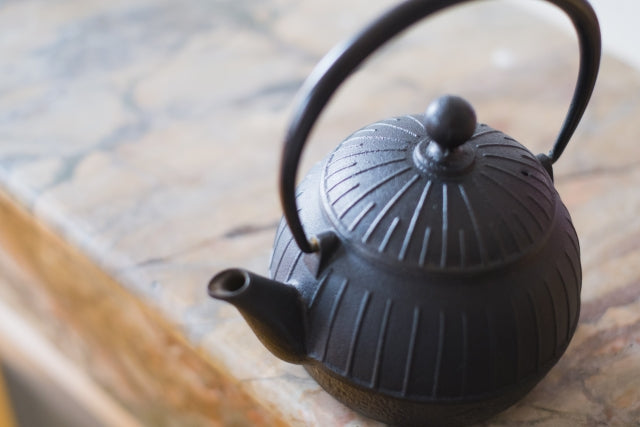
The Ultimate Guide to Kyusu (Traditional Japanese Teapot)
How to Choose the Best Traditional Japanese Teapot?
A kyusu (traditional Japanese teapot) is an essential accessory for the preparation of tea. Today’s kyusu are available in all materials, colors and shapes. Read on to learn about the differences in the types of kyusu and find the ideal kyusu for preparing a superb cup of Japanese tea.
1. The material
|
|
Clay | Ceramics |
| Image |  |
 |
|
Raw material |
Potter’s clay mixed with silica and feldspar is the main raw material exploited. It is known as "earthenware." |
Crushed pottery stones such as quartz and feldspar mixed with clay are the main raw materials exploited. It is known as "stoneware." |
|
Details |
Clay has a high water holding absorption capacity. It exhibits the natural warmth and rustic beauty of the soil. |
The high-quality glassy porcelain has smooth, mirror-like surface. It has a lower water holding absorption capacity than clay, but provides some of the best cups of tea. |
| Representative example |
Tokoname ware, Banko ware |
Arita ware |
|
|
Ironware |
Resin |
|
Image |
 |
 |
|
Details |
The high quality design and the durability of ironware ensure long-lasting products. In recent years, colorful iron teapots are becoming increasingly popular in numerous countries around the world. Unlike iron kettle used for boiling hot water, Japanese cast iron teapot are made in cast iron with an enamel coating inside to prevent corrosion. They are also much easier to maintain. |
Resin made teapots are available at reasonable prices. Above all, they are light and unbreakable. They are perfect for children and those with a weak grip. |
| Representative example |
Nambu ironware |
|
|
|
Heat resistant glass teapot | Hario filter-in bottle made of heat-resistant glass |
|
Image |
 |
 |
|
Details |
Teapots made of heat-resistant glass are particularly visually pleasing when brewing tea. It allows users to witness tea leaves as they open and the color change of water. | Cold brew tea seems to be the latest trend. Simply add tea leaves and water to the bottle and leave it in the fridge. There is a built-in filter, so the tea can be poured without leakage of tea leaves. The liquid does not spill out even if it is tilted. |
| Representative example |
2. The size
The assumption that bigger is always better is not always correct. If the kyusu is too large, the tea will come out too much and it will results in a cup of tea high in astringency. On the contrary, if it is too small, it will have to be replenished many times making the guest(s) wait.
It is recommended to choose a suitable Kyusu depending on the number of cups you wish to brew at one time. You should keep in mind that a typical cup of green tea may contain 60-100 mL.
The guideline for the size of the Kyusu depending on the number of person is as follows :
■ For 2-3 people: 200ml-340ml■ For 3-4 people: 340ml-480ml
■ For 4-5 people: 480ml-600ml
3. The type of tea strainer
| Shape | Sasame filter | Stainless steel mesh tea strainer | Stainless steel mesh net strainer basket |
|
Tea strainer |
 |
 |
 |
|
Strong points |
A type of tea strainer featuring a series of holes made directly in the body of the Kyusu teapot. Fine cut loose leaf teas such as deep-steamed green teas (fukamushicha) and powdered teas tend to clog, so it is recommended to choose teas with the finest possible grain. | A tightly woven stainless steel mesh strainer for steeping fine cut loose leaf teas. Stainless steel mesh tea strainers come in many different designs from obiami filters (built-in metal sieves that wrap all the way around the inside of the tea pot) to itaami filters (built-in filters that drape over the spout). | This is the most common type of tea strainer. It enables easy disposal of used tea leaves and easy cleaning. It is recommended to used large teacup to fully submerged the tea strainer beneath the water. |
4. The matching (“ suriawase ”)

5. The handle
When it comes to choosing the perfect handle, there are no specific rules. Still, let’s choose one according to the purpose and ease of use.
 |
 |
|
Yokote (Side handle type) |
Ushirode (Back handle type) |
|
A traditional yokote type Japanese teapot. The side handle is very convenient for pouring tea with one hand. You can also place your thumb on the lid while pouring the tea so it would not slide off. |
A back-handled Japanese teapot. |
 |
 |
|
Uwategata (Top handle type) |
Houbin (No handle type) |
|
A top-handled teapot great for brewing teas that are drunk in volume and use boiling water to brew such as genmaicha and hojicha. |
A small type of kyusu with no handle great for brewing high quality teas that are found to be very sensitive to high temperatures such as gyokuro or high-grade Sencha. |




Leave a comment
This site is protected by hCaptcha and the hCaptcha Privacy Policy and Terms of Service apply.